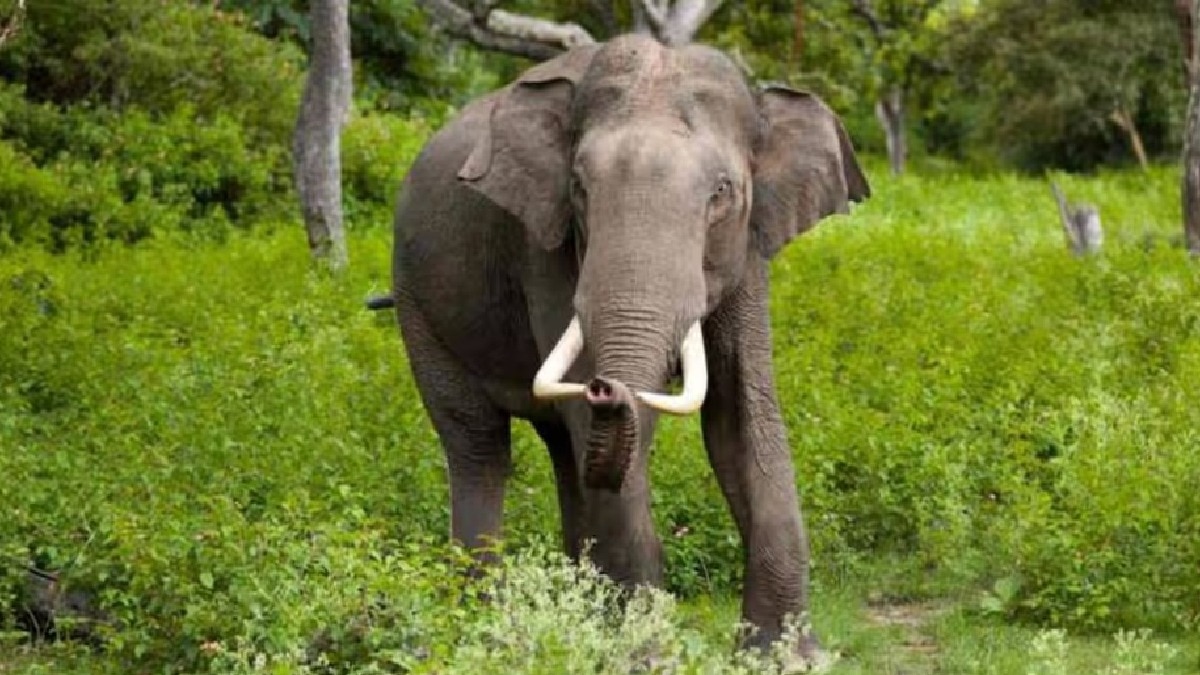[ad_1]
Two days ago in Chhattisgarh Jashpur, an attack by wild elephants killed four people, including three from the same family. The incident has put the spotlight on the important but often overlooked issue of human-animal conflict in the state.
Rise in Elephant Attacks
Animal-human conflict has become one of the major causes of death among tribal people living in the forests of Chhattisgarh. In the Sarguja division’s Ambikapur alone, 40 people have been killed by elephants that trespass into vulnerable villages. The number is even higher across the state. According to government data, 250 people have been killed in wild animal attacks in Chhattisgarh from 2019 to 2023, with 84 people injured. Additionally, more than 60,000 incidents of crop damage have occurred during this period.
Sources in the Chhattisgarh wildlife department report that around 595 people have been killed in such encounters over the past 11 years, with an average of 54 deaths per year. The toll was 95 in 2021-22, 77 in 2022-23, and 77 again in 2023-24. So far in 2024, approximately 10 people have died due to this ongoing issue.
As the numbers continue to rise, it’s crucial to explore the root causes of this fatal problem that no government has been able to resolve.
Several factors contribute to these unwanted confrontations. A significant cause is the extreme lack of food in the forests, where native vegetation—the primary nutrient source for wildlife—has been largely replaced by the invasive plant species Lantana camara. The resulting scarcity of food in Chhattisgarh’s forests forces wildlife to move into human settlements in search of sustenance, leading to increased conflicts.
Invasive Plant Fuels Wildlife Conflicts in Chhattisgarh
Species like Lantana camara, introduced 200–250 years ago as an ornamental plant, have extensively propagated across arid and semi-arid regions of India due to their year-round greenery. These exotic plants, which offer almost no nutritional value, also restrict natural grasslands, forcing wild herbivores to feed on unpalatable invasive species, change their dietary habits entirely, or move out of forest areas in search of food, inevitably increasing human-animal conflict.
Chhattisgarh is heavily affected by the growth of Lantana, as are other forested states such as Assam, Kerala, and Karnataka. Even at Kuno National Park, this species is causing havoc and affecting wildlife.
Recognizing this root cause, the Chhattisgarh forest department has made significant strides in reducing the spread of this alien plant. Over the past five years, Lantana weed has been removed from 4.41 lakh hectares of Chhattisgarh’s forests.
“Removing invasive weeds from forests enhances regeneration and productivity,” said Srinivas Rao, Chief Forest Secretary. “Due to climate change, vast productive forests are being invaded by Lantana and other weeds. Excellent grasslands have emerged after weed removal, facilitating the free movement of animals. The forest fire-affected area has been reduced by 50 percent.”
OP Yadav, CEO of CAMPA, added, “This will not only aid in the natural regeneration of forests but also increase food availability for herbivores like chital and sambar by creating grasslands. This year, conflicts have decreased significantly, resulting in fewer deaths.”
[ad_2]
